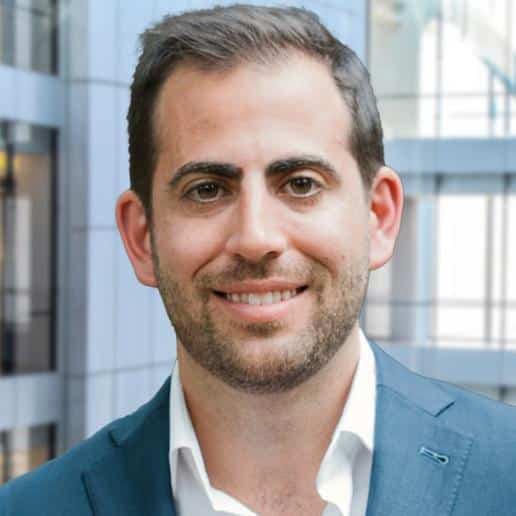Affordable Housing Beyond LIHTC

By Lyla Maisto
8 min read
🔉 Editor’s Note: Listen to the complete panel discussion by visiting NH&RA’s On-Demand Learning Center.
As proponents of affordability grapple with the ramifications of a rapidly changing regulatory landscape, stakeholders continue to search for innovative pathways toward preserving and developing affordable projects at a rate commensurate with rising demand. That was the focus of Affordable Housing Beyond LIHTC, a panel at National Housing & Rehabilitation Association’s Annual Meeting in January.

Moderated by Sean Burke of PGIM Real Estate, the panel featured insights on novel policy and finance solutions from Sam Adams of KeyBanc Capital Markets, Mikki Anderson of the Atlanta Urban Development Corporation and Brian Heide of Bank of America.
“Doing Low Income Housing Tax Credit deals is hard,” Burke began. “Our goal on this panel is to flip that on its head and say, ‘If we can’t do a LIHTC deal, how can we still achieve affordability in the projects that we’re doing?” The ensuing discussion was wide-ranging, with industry insights on reimagining municipal bonds, ground leases, HUD’s 221d( 4 ) financing program and more.

Mission and Tools
Amid tumultuous market conditions, Sam Adams observed that some housing authorities have begun to take a longer view in their evaluation of mission metrics. “Housing authorities around this country are clearly in the business of mission,” he said. “What is the most mission we can achieve with the tools we have?”
For Adams and KeyBanc Capital Markets, this has meant working with housing authorities to secure credit ratings. “When they go to borrow money for a given project, instead of thinking of it as project finance, it is municipal bond finance, the same way your local school district or your city would build roads. The organization itself, their guarantee is what’s being evaluated…Some housing authorities are understanding that they may have additional value as a construction lender, or in limited cases, as a permanent lender.”
Such imaginative strategies are not one-size-fits-all, however, and Adams acknowledged the reality that smaller housing authorities may not be able to transact in this manner. “A very well-run, very hard-working, wonderful eight-unit housing authority is not a significant credit partner to institutional capital, that is used to investing in cities or counties,” he said.
But for organizations with sufficient creditworthiness, and a willingness to pursue funding through municipal bonds, Adams said that the effects can be significant. “As you’re working with public partners on mission-driven projects, it’s not rounding the edges of financing. It’s a completely different conversation.”

Subsidies
Mikki Anderson identified the Atlanta Urban Development Corporation (AUDC) as a component of Mayor Andre Dickens’ Affordable Housing Strike Force, a coalition assembled in 2022 to foster collaboration between the city’s vast web of housing agencies, urban development corporations and real estate professionals. The AUDC has since been involved in securing tax abatements for affordable projects, to meet Dickens’ target to preserve 20,000 units of affordable housing in Atlanta through 2030.
“One of the first things that they [the task force] realized is that there was an enormous amount of public land available,” Anderson recalled. “That was the thinking: there has to be a way to leverage that land so that developers can build more affordable housing.”
Since then, the AUDC has collaborated with developers to provide tax abatement in the form of ground leases, and to streamline the application process for such developments. Anderson framed the strategy in terms of extended commitments to affordability, in contrast with the 30-year timeframe of LIHTC. “Typically, what we’ve been using is about 55 years,” she said of the AUDC ground lease structure. “That tax abatement would be in place [for] the entire time that those units remain affordable…We’re trying to make sure that units stay affordable for the long haul.”
On their own, ground leases are hardly an innovation – but that has not stopped stakeholders throughout the affordable housing sector from reimagining their efficacy in getting projects to fruition. For AUDC, Anderson said that ground leases have proven to be a valuable incentive for developers.
Through a new online portal called the Common Intake Form, Atlanta developers can apply for incentives from participating funding agencies, including AUDC. According to Anderson, the unified application process has led to unprecedented coordination between government agencies, urban development corporations and developers. “We’re able to really accelerate development because we’re all working toward the same goal,” she said.
“Without these abatements, the subsidy is going to have to come from somewhere,” Anderson remarked. “This goes a long way because we are utilizing land that is already public land. It’s not as if we are taking money away from the state or the county because those parcels weren’t on the tax roll to begin with.”
“Can it be done without the abatement? Absolutely. But it’s like robbing Peter to pay Paul,” she added. “Some agency’s going to have to come up with gap funding in order to make these work without LIHTC.”

Paying for the Capital Stack
“So many times on these panels, we focus on words like ‘workforce’ or ‘attainable housing’ or ‘middle income,’” noted Brian Heide of Bank of America. “The real point is, what do we do when there are no tax credits available?” For Heide, this pointed to a deeper question of defining affordable housing. “Affordable housing is housing where people need a way to finance properties, where there’s a challenge for the people that live there,” he posited.
“If you’re an average person in an average market, meaning you’re earning 100 percent of the area median income, paying an average rent and you get an average wage increase from your employer, and you pay an average rent increase to your landlord, you’re going to pay your landlord 40 to 65 percent of your wage increase…How do we as financial providers help solve that problem?”
In Heide’s experience, the solution lies in collaborating with the investment partner to find “what is truly just an economic solution, a true capital market solution, traditional financing, but [through] ways that are more creative.” For tax abatements, Heide outlined that developer funds no longer needed for tax payments could be leveraged as debt.
And, he said, developers could also help stabilize rents by charging fewer or no fees. “‘[It’s] not popular to most people in the room,” he acknowledged, “but it brings down the cost of construction, brings down the amount of rent you have to charge to finance that construction.”
In turn, institutions like Bank of America can offer such developers longevity in financing. “We’re not looking for a refinance of our equity at the end of a construction loan. It takes that pressure off of the developer […] You don’t have to then put the pressure on your rents and your tenants to accommodate a highly leveraged loan or a low leverage loan,” Heide explained. “It’s just a much more simplified, much more patient capital stack. And it all rolls down to who actually pays for that capital stack. It’s the person living in the apartment.”
Funding Preservation of Affordability by Rethinking 221d( 4 ) Financing
As the panel turned to the audience for questions and discussion, one attendee pointed out obstacles to the preservation of affordability in deals on aging properties. “The biggest challenge in specifically utilizing LIHTC in preservation transactions is [for] assets that are facing physical obsolescence and significant deferred maintenance, neglect of investment over time and having construction costs that are on the order of $100,000 per unit,” the attendee said, referring to significant costs associated with building-level overhauls, such as utilities and structural issues in many older buildings.
“Those with a credit enhancement or an organizational strength are not borrowing based on a real estate product basis,” Adams replied, calling back to his earlier anecdotes about municipal bond financing for affordable development. “They are borrowing organizationally. So, they’re able to underwrite, many times, through a housing authority. They’re putting a lot of vouchers into the project. They’re able to—to some degree—be on both sides of the underwriting,” he said. “Getting those top dollars above a supportable debt, that usually is where 90 percent of the work really goes in. And there’s equity, but with taxable rates up, that’s much more challenging.”
Burke added that HUD 221d( 4 ) financing could be a major component of funding for the preservation of affordability.
“You can use that [HUD] loan and do a substantial rehab on the property, but underwrite to your budgeted rents that you expect after rehab is complete,” Burke said, outlining the agency’s October 2024 changes to middle-income housing constraints. “Folks we work with who have the time and the patience to work with the HUD program are looking to that as an option when facing those challenges.”
“At the end of the day,” Anderson remarked, “our public agencies have to put their money where their mouths are. They really do.”



